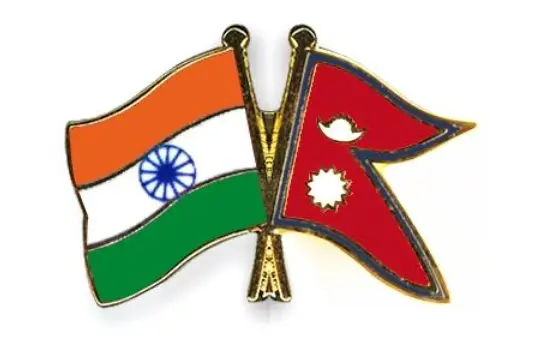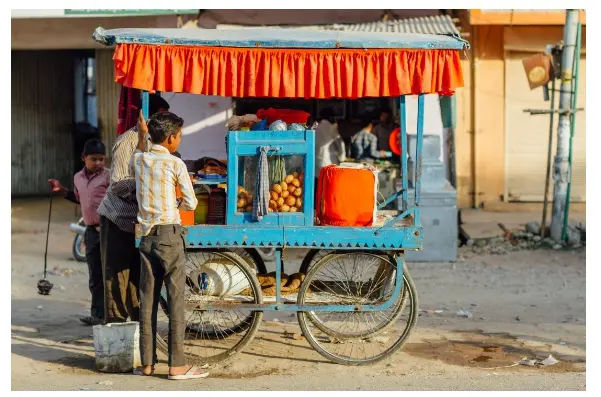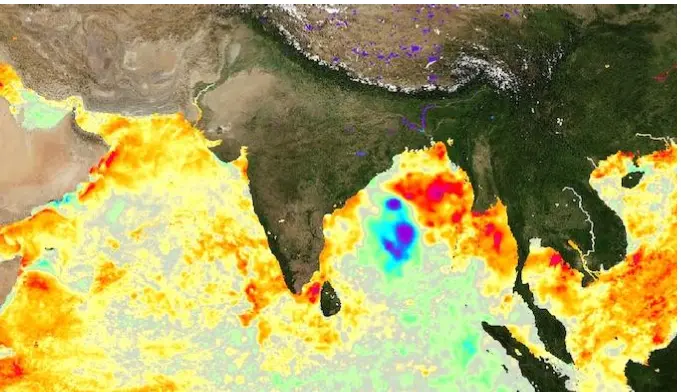Tuesday, 7th May 2024
Increasing Contribution of Personal Income Tax and Indirect Tax
In News: In the midst of ongoing political debates and controversies surrounding socio-economic policies, recent tax data unveiled by the Ministry of Finance illuminates noteworthy trends in India's tax scenario.
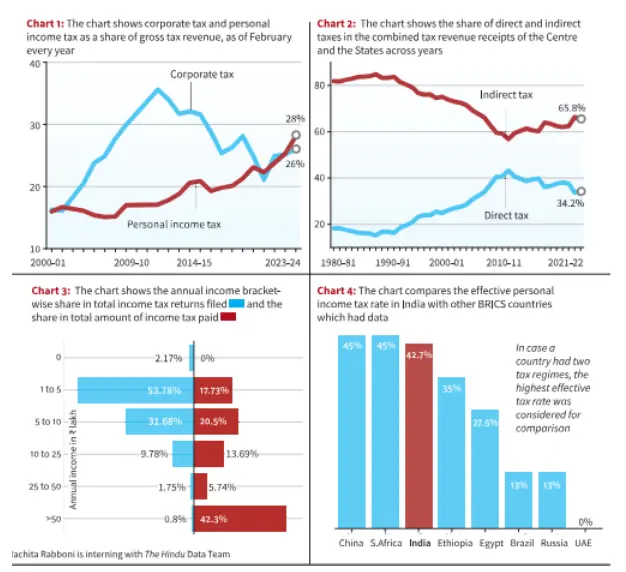
Key Findings of the Report on Direct Tax Collection
- Growth in Direct Tax Collection
- India's net direct tax collections surged by 17.7% in 2023-24, reaching Rs.19.58 lakh crores.
- The rise is attributed to increased personal income taxes, which constituted 53.3% of total taxes, up from 50.06% in the previous year.
- Dip in Corporate Tax
- Corporate tax contribution decreased to 46.5% from 49.6% in 2022-23.
- This decline follows the trend of diminishing corporate tax shares since the deep tax cuts introduced in September 2019.
- Decrease in Share of Direct Taxes, and Increase in Share of Indirect Taxes
- Indirect taxes, including union excise duties and the Goods and Services Tax, have been rising since 2010-11.
- Conversely, the share of direct taxes, which had been increasing until 2010-11, has seen a consistent downturn.
- Relation Between Annual Income Vs. Income Tax Returns Filed
- A majority (53.78%) of individuals filing personal income tax earn between Rs 1 lakh to Rs. 5 lakh annually.
- Wealthier individuals, earning over Rs. 50 lakh, constitute a small portion (0.84%) but contribute significantly (42.3%) to total income tax.
- Effective Personal Income Tax Rate
- India exhibits among the highest effective personal income tax rates among BRICS economies.
Concerns Arising from Rising Share of Personal Income Tax and Indirect Taxes
- Income Inequality
- Increasing reliance on personal income tax may disproportionately burden lower and middle-income individuals, exacerbating income inequality.
- Consumer Burden
- Indirect taxes can impose a heavier burden on lower-income individuals, potentially leading to decreased consumer spending.
- Economic Efficiency
- High personal income tax rates may discourage work, savings, and investment, leading to economic inefficiencies.
- Tax Evasion and Avoidance
- Rising tax rates may incentivize tax evasion or avoidance strategies, undermining the integrity of the tax system.
- Macroeconomic Stability
- Heavy reliance on personal income tax and indirect taxes may make government finances vulnerable to economic downturns.
Government Initiatives to Boost Direct Tax Collection
- Promoting Voluntary Income-tax Compliance
- Initiatives like the Vivad se Vishwas Scheme aim to settle pending tax disputes, benefiting both the government and taxpayers.
- Focus on Digital Transactions
- Promoting digital payments discourages cash-based transactions, enhancing tax tracking capabilities.
- Increased Scrutiny and Compliance Measures
- Tax authorities have intensified scrutiny and compliance measures to identify tax evaders and non-compliant taxpayers.
- Awareness and Education Campaigns
- Government campaigns aim to inform taxpayers about their rights and responsibilities and promote tax compliance.
- Expansion of TDS/TCS Scope
- New transactions brought under Tax Deduction at Source (TDS) and Tax Collection at Source (TCS) aim to widen the tax base.
- Transparent Taxation - Honoring The Honest Platform
- This platform aims to bring transparency to income tax systems and empower taxpayers.
|
UPSC Previous Year Questions Prelims (2021) Q. Which one of the following effects of creation of black money in India has been the main cause of worry to the Government of India? (a) Diversion of resources to the purchase of real estate and investment in luxury housing. (b) Investment in unproductive activities and purchase of precious stones, jewellery, gold, etc. (c) Large donations to political parties and growth of regionalism. (d) Loss of revenue to the State Exchequer due to tax evasion. Ans: (d) Mains (2013) Q. What is the meaning of the term ‘tax expenditure’? Taking the housing sector as an example, discuss how it influences the budgetary policies of the government. |
Source: TH
Challenges Encountered by MSMEs in India
In News: The Union Budget 2023-24 introduced a provision in the IT Act to ensure timely payments to MSMEs within 45 days. However, it has led to large companies canceling orders to registered MSMEs and favoring unregistered ones to avoid compliance.
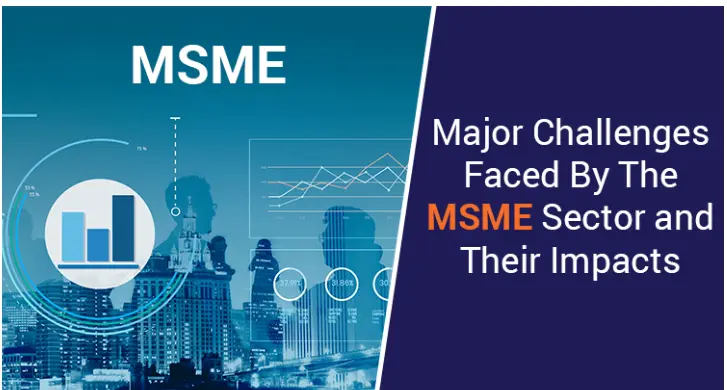
Significance of MSMEs in India
- MSMEs are often hailed as the powerhouse of the Indian economy due to their substantial contributions to employment generation, exports, and overall economic growth.
- They account for more than 11 crore jobs and contribute approximately 27.0% to India's GDP.
- With around 6.4 crore MSMEs, of which 1.5 crore are registered on the Udyam portal, they employ about 23.0% of the Indian labor force, making them the second-largest employer in India after agriculture.
- MSMEs contribute 38.4% to the total manufacturing output and 45.03% to the country's total exports.
Challenges
- Problem of dwarfism: Some MSMEs, termed as dwarfs, consume resources without significant contributions to job creation and economic growth compared to newer firms.
- Lack of funding: A majority (90%) of MSME funding comes from informal sources.
- Poor integration of digital technologies: Adoption of technologies like big data, AI, and virtual reality into manufacturing operations remains limited.
- Environmental impact: The sector lacks cleantech innovation, hindering the transition to a circular and low-carbon economy.
Government Initiatives to Boost MSME Sector
- The Government of India prioritizes MSME ecosystem development for achieving Atma Nirbhar Bharat (self-reliant India).
- Initiatives like 'Make in India' aim to elevate India on the manufacturing value chain and position it as a global manufacturing hub.
- Schemes like Production Linked Incentives (PLI) and Zero Effect Zero Defect (ZED) certification promote sectoral growth.
- Programs like the Prime Minister's Employment Generation Programme (PMEGP) foster self-employment and microenterprises.
- Digital Saksham initiatives and portal interlinking enhance digitalization for targeted schemes.
Latest Tax Compliance Guidelines for MSMEs
- In India, businesses typically record expenses when they occur (accrual basis), but the MSMED Act 2006 and Section 43B(h) of the IT Act mandate timely payments to MSME Registered Enterprises.
- Failure to comply leads to inability to deduct payments as expenses in the same year, potentially increasing taxable income and business taxes.
- Late payments to MSMEs result in the payer being liable to pay interest on the overdue amount.
Concerns Raised by Big Companies and MSMEs
- Big companies express concerns about increased tax liability, while MSMEs report order cancellations due to the new tax clause.
- MSMEs note big companies shifting business to unregistered MSMEs to avoid compliance with mandatory payment timelines.
- Some MSME associations have approached the Supreme Court against the new norm, while the Union MSME Ministry seeks industry input for solutions.
Source: IE
Corporal Punishment
In News: Recently, the Tamil Nadu School Education Department released guidelines for the elimination of corporal punishment in schools, known as the Guidelines for Corporal Punishment Elimination (GCEP).

Key Facts About the Guidelines
- The guidelines aim to establish safe and nurturing environments for students by addressing physical punishment, mental harassment, and discrimination.
- They include measures to safeguard the mental well-being of students and conduct awareness camps to acquaint stakeholders with the National Commission for Protection of Child Rights (NCPCR) guidelines.
- Emphasis is placed on forming monitoring committees at each school comprising school heads, parents, teachers, and senior students to oversee guideline implementation and address any issues.
- The guidelines list affirmative actions against corporal punishment, such as multidisciplinary intervention, life-skills education, and mechanisms for children's voices.
Understanding Corporal Punishment
- Corporal punishment, defined by the UN Committee on the Rights of the Child, involves using physical force to cause some degree of pain or discomfort.
- It predominantly includes hitting children with a hand or implements like sticks, belts, etc., and is prevalent globally, affecting around 60% of children aged 2–14 years.
- There is no statutory definition of 'corporal punishment' targeting children in India.
- Types of corporal punishment encompass physical and mental mistreatment, including coercive actions and non-physical behaviors affecting a child's academic and psychological well-being.
Justification and Effects of Corporal Punishment
- Corporal punishment is legal in some states in the United States and is supported by certain sections of the Indian Penal Code (IPC).
- However, it can lead to detrimental effects on children's mental and physical health, including increased anxiety, depression, aggression, and difficulty forming relationships.
- Physical injuries and the likelihood of substance abuse are also outcomes of corporal punishment.
Constitutional and Legal Provisions
- Statutory provisions such as the Right to Education Act (RTE) and the Juvenile Justice (Care and Protection of Children) Act, 2015, impose restrictions and penalties for corporal punishment.
- Legal provisions in the Indian Penal Code (IPC) address actions related to corporal punishment.
- Judicial cases have presented varying interpretations of corporal punishment, with some upholding it as beneficial and others condemning it.
- Constitutional provisions emphasize the protection of child rights and the duty of the state and parents to ensure children's well-being and education.
Role of Statutory Bodies and International Laws
- The National Commission for Protection of Child Rights (NCPCR) provides guidelines to eliminate corporal punishment and mandates the formation of monitoring cells in schools.
- International laws, such as Article 19 of the UN Convention on the Rights of the Child, advocate for the protection of children from all forms of violence and mistreatment.
|
UPSC Previous Year Questions Prelims (2020) Q. Other than the Fundamental Rights, which of the following parts of the Constitution of India reflect/reflects the principles and provisions of the Universal Declaration of Human Rights (1948)?
Select the correct answer using the code given below: (a) 1 and 2 only (b) 2 only (c) 1 and 3 only (d) 1, 2 and 3 Ans: (d) Prelims (2011) Q. Consider the following:
Which of the above is/are Human Right/Human Rights under “Universal Declaration of Human Rights”? (a) 1 only (b) 1 and 2 only (c) 3 only (d) 1, 2 and 3 Ans: (d) Mains (2021) Q. Though the Human Rights Commissions have contributed immensely to the protection of human rights in India, yet they have failed to assert themselves against the mighty and powerful. Analysing their structural and practical limitations, suggest remedial measures. |
Source: TH
Mullaperiyar Dam Controversy
In News: In the Supreme Court, Tamil Nadu has alleged that while Kerala raises safety concerns about the Mullaperiyar dam, it obstructs essential maintenance efforts on the dam.

Location of Mullaperiyar Dam
- The Mullaperiyar dam is situated at the confluence of the Mullayar and Periyar rivers, entirely within Kerala.
- Constructed in the late 1800s in the princely state of Travancore, it was leased to the British-ruled Madras Presidency for 999 years in 1886.
- The purpose of the dam was to divert a part of the west-flowing Periyar river eastwards to irrigate arid areas of Tamil Nadu.
Situation after Independence
- After independence, the Kerala government contested the validity of the earlier agreement and renegotiated terms in the 1970s.
- Tamil Nadu was granted rights to the land, water, and hydro-power projects at the dam site, with Kerala receiving rent in return.
Origin of the Mullaperiyar Dam Dispute
- Safety concerns arose in 1979 following reports of minor earthquakes causing cracks in the dam.
- The Central Water Commission recommended lowering the water level as an emergency measure until the structure could be strengthened.
- Divergent perspectives emerged, with Tamil Nadu seeking to raise the water level and Kerala expressing safety concerns due to the region's seismic activity.
Supreme Court Judgement on Mullaperiyar Dam Conflict
- In 2006, the Supreme Court allowed Tamil Nadu to raise the water level to 142 feet, dismissing Kerala's apprehensions.
- Kerala countered with a state law restricting the water level to 136 feet, which was later deemed unconstitutional in 2014.
- The Supreme Court directed the formation of a supervisory committee to oversee the raising of the water level and address safety concerns.
Provisions for Water Distribution in the Indian Constitution
Relevant provisions include Entry 17 in the State List, Entry 56 in the Union List, and Article 262.
Dam Safety Act and Mullaperiyar Dam
- About the Act
- The Dam Safety Act, enacted in December 2021, addresses safety concerns of major dams nationwide.
- It covers surveillance, inspection, operation, and maintenance of certain dams to prevent disasters related to dam failure.
- The Act establishes two national institutions: the National Committee on Dam Safety (NCDS) and the National Dam Safety Authority (NDSA).
- Key Provisions
- The Act applies to dams over 15m in height and between 10m and 15m with certain stipulations.
- It mandates the formation of State Dam Safety Organisations and Committees.
- Dam owners are held responsible for construction, operation, maintenance, and supervision.
Linkages between Dam Safety Act and the Mullaperiyar Dam
- The NDSA will perform the role of the State Dam Safety Organisation for dams located in one state and used by another, including the Mullaperiyar dam.
- Experts suggest that the NDSA may subsume the functions of the supervisory committee as per the Act, potentially impacting the ongoing dispute resolution.
Source: TH
Drip Pricing
In News: Recently, the Centre issued a warning regarding "drip pricing," highlighting its potential to catch consumers off guard with undisclosed fees.
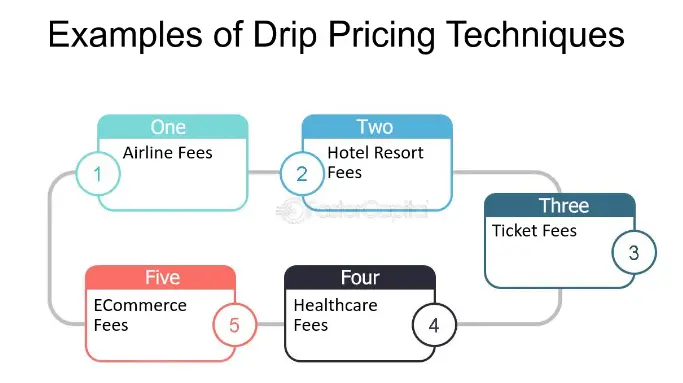
About Drip Pricing
Drip pricing is a pricing technique employed by firms wherein only a portion of a product's price is advertised initially, with additional charges being revealed later in the buying process.
Key Characteristic
- Drip pricing often involves the initial withholding of unavoidable fees such as booking, service, resort, or credit card fees, as well as local taxes and add-ons like internet access.
- These hidden costs are gradually disclosed to the buyer as they progress through the purchasing process, hence the term "drip" pricing.
- The technique is commonly used in industries like hospitality, travel, and online payments.
- Companies may employ drip pricing to lure customers into initiating the purchase process, making it less likely for them to abandon the transaction upon discovering additional costs.
- Consumers may find drip pricing frustrating as they prefer upfront pricing transparency and may feel deceived by later add-ons.
- Drip pricing can complicate comparison shopping and disadvantage sellers who opt for more transparent pricing strategies.
Example
An example of drip pricing is the sale of airplane tickets that initially appear cheaper but do not include additional fees such as baggage charges.
Source: HT
MQ-9B Predator
In News: Recently, the Defence Ministry approved the procurement of 30 MQ-9B Predator drones (SeaGuardian variant) from the US to bolster the surveillance capabilities of the armed forces.

About MQ-9B Predator
The MQ-9B Predator is a high-altitude, long-endurance armed Unmanned Aerial Vehicle (UAV) developed by General Atomics Aeronautical Systems (GA-ASI).
Key Features
- It is a variant of the MQ-9 "Reaper" primarily designed for the United States Air Force (USAF).
- Used for surveillance, intelligence gathering, and airstrikes by the United States.
- The MQ-9B drone includes two variants: Sky Guardian and Sea Guardian, the latter being utilized by the Indian Navy since 2020.
Technical Specifications
- Payload capacity of up to 5,670 kg and a fuel capacity of 2,721 kg.
- Capable of operating at altitudes exceeding 40,000 feet.
- Can fly as close as 250 metres from the ground without detection.
- Maximum endurance of 40 hours, providing prolonged surveillance capabilities.
- Top speed of 275 mph (442 km/h).
- Armed with strike missiles, including four Hellfire missiles and around 450 kg of bombs.
- Capable of automatic take-offs and landings for operational flexibility.
- Can integrate into civil airspace, offering real-time situational awareness for joint forces and civil authorities.
Applications
- Land and maritime surveillance
- Anti-submarine warfare
- Anti-surface warfare
- Electronic warfare
- Expeditionary missions
Source: MC
Non-Banking Financial Company (NBFC)
In News: NBFCs are raising their fixed deposit (FD) rates to attract funds, compensating for reduced bank borrowings.
About Non-Banking Financial Company (NBFC)
Definition and Legal Framework
- A Non-Banking Financial Company (NBFC) is a company incorporated under the Companies Act, 1956, primarily involved in various financial activities such as loans, investments, leasing, hire-purchase, insurance, and chit funds.
- It excludes institutions primarily engaged in agricultural or industrial activities, sale/purchase/construction of immovable property, or providing non-financial services.
- A subcategory of NBFCs, called Residuary non-banking companies, is constituted by companies primarily receiving deposits under any scheme.
Deposit-taking Activities
- NBFCs are permitted to accept deposits but only in the form of time deposits, and they cannot provide demand deposit facilities like savings or current accounts.
- They are restricted to accepting deposits for a period ranging from 12 to 60 months, with interest rates capped at 12.5% per annum.
Regulatory Oversight and Supervision
- NBFCs are regulated by both the Ministry of Corporate Affairs and the Reserve Bank of India (RBI).
- The RBI issues licenses to NBFCs, regulates their operations, and ensures compliance with established norms and regulations.
Classification and Categorization
- NBFCs are categorized based on their liabilities into Deposit and Non-Deposit accepting NBFCs.
- Non-deposit taking NBFCs are further classified based on their size into systemically important and other non-deposit holding companies.
- Systemically important NBFCs are those with an asset size of ₹500 crore or more, as per the last audited balance sheet, and their activities significantly impact the financial stability of the economy.
Comparison with Banks
- While NBFCs engage in lending and investment activities similar to banks, they do not hold a banking license, cannot accept demand deposits, and are not part of the payment and settlement system.
- Unlike banks, NBFC depositors do not benefit from deposit insurance provided by institutions like the Deposit Insurance and Credit Guarantee Corporation.
Examples and Scope
NBFCs encompass a diverse range of financial institutions, including investment banks, mortgage lenders, insurance companies, equipment leasing companies, and peer-to-peer lenders.
Source: FE
Capital Gains Tax (CGT)
In News: Finance Minister Nirmala Sitharaman has refuted claims suggesting that the Income Tax Department intends to implement alterations to the capital gains tax framework if the government secures re-election in the ongoing Lok Sabha 2024 elections.
Understanding Capital Gains Tax (CGT)
- Definition of Capital Gains: Capital gains refer to the profits obtained from the sale of any capital asset, including land, buildings, vehicles, patents, trademarks, and machinery.
- Inclusion of Assets: Capital assets also encompass rights in or in relation to an Indian company, as well as rights of management, control, or any other legal entitlement.
- Short-term vs. Long-term Gains: Capital gains are categorized as short-term or long-term based on the duration for which the asset is held.
- Short-term Capital Gains
- Assets held for less than 36 months, or 24 months in the case of immovable properties, are considered short-term.
- Profits from the sale of short-term assets are taxed as short-term capital gains.
- Long-term Capital Gains
- Assets held for over 36 months, or for more than a year in the case of certain financial instruments like preference shares, equities, and mutual funds, are categorized as long-term.
- Profits from the sale of long-term assets are taxed as long-term capital gains.
- Taxation of Capital Gains
- Capital gains are treated as income and are subject to taxation when an asset is transferred between owners.
- Both individuals and businesses are liable to pay capital gains tax (CGT).
- Tax-efficient Strategies
- Taxpayers can employ tax-efficient financial strategies to mitigate the burden of CGT and optimize their tax liabilities.
Source: BS
Participatory Notes
In News: Foreign portfolio investors (FPIs) based at the GIFT International Financial Services Centre (IFSC) and registered with the Securities and Exchange Board of India (SEBI) have been granted permission to issue participatory notes.
Participatory Notes: An Overview
- Definition and Alias
- Participatory Notes, commonly known as PNs or P-Notes, serve as financial instruments utilized by investors and hedge funds for investing in Indian securities.
- Remarkably, they don't require registration with the Securities Exchange Board of India (SEBI).
- Characteristics
- Offshore Derivative Investments: Investments made through Participatory Notes are categorized as offshore derivative investments.
- Issuance: Registered foreign Portfolio Investors (FPIs) issue P-Notes to overseas investors who seek exposure to the Indian stock market without undergoing direct registration.
- Anonymity: While Foreign Institutional Investors (FIIs) must report all investments each quarter to SEBI, they are not obligated to disclose the identity of the actual investors.
Understanding Foreign Portfolio Investment
- Definition
- Foreign Portfolio Investment (FPI) refers to the acquisition and retention of a diverse range of foreign financial assets by investors aiming to invest outside their home country.
- Investment Instruments
- Variety: FPI encompasses investments in various instruments such as stocks, bonds, mutual funds, derivatives, fixed deposits, etc.
- Objective: Generally, FPI is pursued to inject funds into a foreign country's stock market with the aim of generating swift returns.
- Regulation in India
- In India, the regulation of foreign portfolio investment falls under the purview of the Securities and Exchange Board of India (SEBI).
Source: BS
Share the article
Edukemy’s Current Affairs Quiz is published with multiple choice questions for UPSC exams
MCQ
Get Latest Updates on Offers, Event dates, and free Mentorship sessions.

Get in touch with our Expert Academic Counsellors 👋
Frequently Asked Questions
UPSC Daily Current Affairs focuses on learning current events on a daily basis. An aspirant needs to study regular and updated information about current events, news, and relevant topics that are important for UPSC aspirants. It covers national and international affairs, government policies, socio-economic issues, science and technology advancements, and more.
UPSC Daily Current Affairs provides aspirants with a concise and comprehensive overview of the latest happenings and developments across various fields. It helps aspirants stay updated with current affairs and provides them with valuable insights and analysis, which are essential for answering questions in the UPSC examinations. It enhances their knowledge, analytical skills, and ability to connect current affairs with the UPSC syllabus.
UPSC Daily Current Affairs covers a wide range of topics, including politics, economics, science and technology, environment, social issues, governance, international relations, and more. It offers news summaries, in-depth analyses, editorials, opinion pieces, and relevant study materials. It also provides practice questions and quizzes to help aspirants test their understanding of current affairs.
Edukemy's UPSC Daily Current Affairs can be accessed through:
- UPSC Daily Current Affairs can be accessed through Current Affairs tab at the top of the Main Page of Edukemy.
- Edukemy Mobile app: The Daily Current Affairs can also be access through Edukemy Mobile App.
- Social media: Follow Edukemy’s official social media accounts or pages that provide UPSC Daily Current Affairs updates, including Facebook, Twitter, or Telegram channels.

